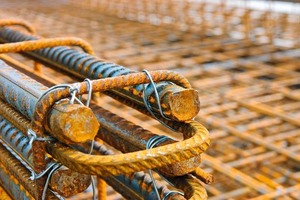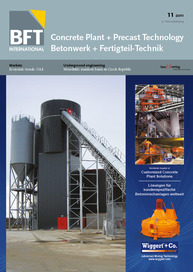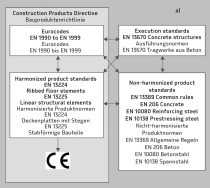Eurocode 2
On July 1, 2012, Eurocode 2 will be introduced in Germany on a mandatory basis and it replaces the national standard DIN 1045-1 being valid until then.
For some time now, Europe has also been growing to-gether in terms of technical building authority approval. Already in the 1980s, the European Commission decided to harmonize the technical guidelines in the field of load-bearing structures and the design of building structures as well as to facilitate European cross-border activities. Thus, the first generation of the Eurocode for structural engineering was created. In 1989, the Commission assigned the job to the European Standards Organization (CEN = Comité Européen de Normalisation).
European harmonization of national standards has already been the aim of the European Commission for quite same time. To establish a European Standards Authority was a matter of consequence. The CEN develops the Eurocodes, i.e. the European Standards.
The structure of the Eurocodes consists of the two basic standards, that are valid in all fields, the basis of structural design (EC0) and actions on structures (EC1) and the so-called design standards: design of concrete structures (EC2), steel structures (EC3), composite steel and concrete structures (EC4), timber structures (EC5), masonry structures (EC6), geotechnical design (EC7), structures for earthquake resistance (EC8) and aluminum structures (EC9) (www.eurocodes-online.de).
Over a period of more than 30 years, the design guidelines in the construction industry have been standardized in Europe. The Eurocodes are the result of this work. Eurocodes provide a Europe-wide basis for planning, design and construction of building structures, they are the design criteria and form the basis for research and technology. Owing to the harmonization of nationally different rules and regulations, the Eurocodes henceforth facilitate the tender procedure of construction services all over Europe.
Some inspection engineers, however, describe the European Standards as too far reaching and not very practicable.
Dr.-Ing. Hans-Peter Andrä, President of Bundesvereinigung der Prüfingenieure für Bautechnik e.V. states about the introduction of Eurocode 2: “… volume, mass of rules and regulations, relevance and concept of science are too imbalanced. Important things as well as unimportant things are gathered together on a European level. Practical handling is limited. We have to expect misunderstandings and extensive need for interpretation”. The German action group PraxisRegelnBau e.V. is already working out proposals for a revision of EC2. Because in mid 2012, Eurocode 2 is not only introduced but a standard package covering more than 5000 pages will also be binding in terms of technical building authority approval. It is, nevertheless, wrong to claim that the flood of standards came as a surprise. For many years, various committees have been doing a pre-normative job at the highest stage.
In the course of the DIBt research project “EC2 pilot project”, for example, experts involving CAD software providers such as Dicad have tried and tested as well as improved Eurocode 2, Part 1-1 with national amendment in order to enhance the practical feasibility and the acceptance of the standard. An additional target of such pre-normative work is to maximize the consistency of the content between the new Eurocode 2 and the standard DIN 1045-1.
A modern European design standard was presented with Eurocode 2 together with the national amendments. On these general conditions created, cross-border design and construction becomes much easier for the construction industry in Europe. Architects, engineers, CAD provider and inspectors have to adjust themselves. Some, like Dicad, have already incorporated the new standards in their work or products. For quite some time now, Eurocode 2 has been entered into the CAD system Strakon and can be selected and/or enabled.
Even if we have to expect some problems of adjustment on the introduction of Eurocode 2, it is now possible to build Europe-wide. The market is opening up. The construction industry will certainly make use of it.¢





